Springboot reads the pro file and injects static variables
mailConfig.properties
#服务器 mail.host=smtp.qq.com #端口号 mail.port=587 #邮箱账号 mail.userName=hzy_daybreak_lc@foxmail.com #邮箱授权码 mail.passWord=vxbkycyjkceocbdc #时间延迟 mail.timeout=25000 #发送人 mail.emailForm=hzy_daybreak_lc@foxmail.com #发件人 mail.personal=华夏衣裳 #主题 mail.subject=同袍用户激活 #内容模板 mail.html=您的邮箱验证码为:
MailConfig.java
/*
* @(#)MailConfig.java Created on 2019年9月11日
* Copyright (c) 2019 ZDSoft Networks, Inc. All rights reserved.
* $Id$
*/
package com.hxyc.config.properties;
import org.springframework.beans.factory.annotation.Value;
import org.springframework.context.annotation.Configuration;
import org.springframework.context.annotation.PropertySource;
import org.springframework.stereotype.Component;
/**
* @author huangzy
* @version $Revision: 1.0 $, $Date: 2019年9月11日 上午10:29:35 $
*/
@Configuration
@PropertySource(value = "classpath:config/mailConfig.properties", encoding = "UTF-8")
@Component
public class MailConfig {
public static String host;
public static Integer port;
public static String userName;
public static String passWord;
public static String emailForm;
public static String timeout;
public static String personal;
public static String html;
public static String subject;
/**
* @return Returns the host.
*/
public static String getHost() {
return host;
}
/**
* @param host
* The host to set.
*/
@Value("${mail.host}")
public void setHost(String host) {
MailConfig.host = host;
}
/**
* @return Returns the port.
*/
public static Integer getPort() {
return port;
}
/**
* @param port
* The port to set.
*/
@Value("${mail.port}")
public void setPort(Integer port) {
MailConfig.port = port;
}
/**
* @return Returns the userName.
*/
public static String getUserName() {
return userName;
}
/**
* @param userName
* The userName to set.
*/
@Value("${mail.userName}")
public void setUserName(String userName) {
MailConfig.userName = userName;
}
/**
* @return Returns the passWord.
*/
public static String getPassWord() {
return passWord;
}
/**
* @param passWord
* The passWord to set.
*/
@Value("${mail.passWord}")
public void setPassWord(String passWord) {
MailConfig.passWord = passWord;
}
/**
* @return Returns the emailForm.
*/
public static String getEmailForm() {
return emailForm;
}
/**
* @param emailForm
* The emailForm to set.
*/
@Value("${mail.emailForm}")
public void setEmailForm(String emailForm) {
MailConfig.emailForm = emailForm;
}
/**
* @return Returns the timeout.
*/
public static String getTimeout() {
return timeout;
}
/**
* @param timeout
* The timeout to set.
*/
@Value("${mail.timeout}")
public void setTimeout(String timeout) {
MailConfig.timeout = timeout;
}
/**
* @return Returns the personal.
*/
public static String getPersonal() {
return personal;
}
/**
* @param personal
* The personal to set.
*/
@Value("${mail.personal}")
public void setPersonal(String personal) {
MailConfig.personal = personal;
}
/**
* @return Returns the html.
*/
public static String getHtml() {
return html;
}
/**
* @param html
* The html to set.
*/
@Value("${mail.html}")
public void setHtml(String html) {
MailConfig.html = html;
}
/**
* @return Returns the subject.
*/
public static String getSubject() {
return subject;
}
/**
* @param subject
* The subject to set.
*/
@Value("${mail.subject}")
public void setSubject(String subject) {
MailConfig.subject = subject;
}
}springboot static property injection solution
The first way
Assign attributes (objects) through the springboot component initialization life cycle
@Component
public class DSHWechatApiUtil extends DSHBaseController {
@Autowired
private IThirdPartyAuthDao thirdPartyAuthDao;
private static IThirdPartyAuthDao staticThirdPartyAuthDao;
@PostConstruct
public void init() {
staticThirdPartyAuthDao = thirdPartyAuthDao;
}
public static JSONObject getAuthorizerToken(String componentAccessToken, String authorizerAppid, String authorizerRefreshToken) {
JSONObject returnObject = new JSONObject();
try {
if (DSHUtils.isEmpty(componentAccessToken)) {
componentAccessToken = staticThirdPartyAuthDao.selectWechatValue(DSHConstants.WECHAT_PARAMS.COMPONENT_ACCESS_TOKEN);
}
} catch (Exception e) {
e.printStackTrace();
}
return returnObject;
}
}You can see that when the DSHWechatApiUtil tool class component is initialized, the method marked with the @PostConstruct annotation is called. Static variables are assigned values.
The second way
Through @Value() annotation
@Value() annotation will not inject attributes into static variables. By thinking in the first way, Then we must find a way to assign values when this component is initialized.
The first method is certainly possible. First write a property, then assign the value to the property through the @Value() annotation, and finally assign the value to the static property through the @PostConstruct annotation.
Here we have to use another method. The method here is to assign values through the set method. The attribute is statically modified, and the get method is also statically modified, but the set method cannot be statically modified. Use the @Value() annotation to modify the set method.

This will allow successful injection.
The third way
The third way is similar to the second way.
@ConfigurationProperties(prefix = ProjectConfig.PROJECT_PREFIX)
public class ProjectConfig {
public static final String PROJECT_PREFIX = "project";
/**
* 系统版本号
*/
private String version;
/**
* 项目名称
*/
private String name;
/**
* 版权年份
*/
private String copyrightYear;
/**
* 实例演示开关
*/
private static boolean demoEnabled;
/**
* 获取地址ip开关
*/
private static boolean addressEnabled;
public String getVersion() {
return version;
}
public void setVersion(String version) {
this.version = version;
}
public String getName() {
return name;
}
public void setName(String name) {
this.name = name;
}
public String getCopyrightYear() {
return copyrightYear;
}
public void setCopyrightYear(String copyrightYear) {
this.copyrightYear = copyrightYear;
}
public boolean isDemoEnabled() {
return demoEnabled;
}
public void setDemoEnabled(boolean demoEnabled) {
ProjectConfig.demoEnabled = demoEnabled;
}
public static boolean isAddressEnabled() {
return addressEnabled;
}
public void setAddressEnabled(boolean addressEnabled) {
ProjectConfig.addressEnabled = addressEnabled;
}
}As shown in the above code, as long as the set method is set to non-static, then this configuration class The static properties can be injected successfully.
The above is the detailed content of How Springboot reads custom pro files and injects static variables. For more information, please follow other related articles on the PHP Chinese website!
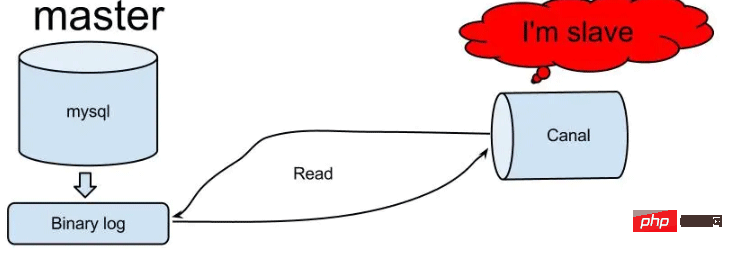 怎么使用SpringBoot+Canal实现数据库实时监控May 10, 2023 pm 06:25 PM
怎么使用SpringBoot+Canal实现数据库实时监控May 10, 2023 pm 06:25 PMCanal工作原理Canal模拟MySQLslave的交互协议,伪装自己为MySQLslave,向MySQLmaster发送dump协议MySQLmaster收到dump请求,开始推送binarylog给slave(也就是Canal)Canal解析binarylog对象(原始为byte流)MySQL打开binlog模式在MySQL配置文件my.cnf设置如下信息:[mysqld]#打开binloglog-bin=mysql-bin#选择ROW(行)模式binlog-format=ROW#配置My
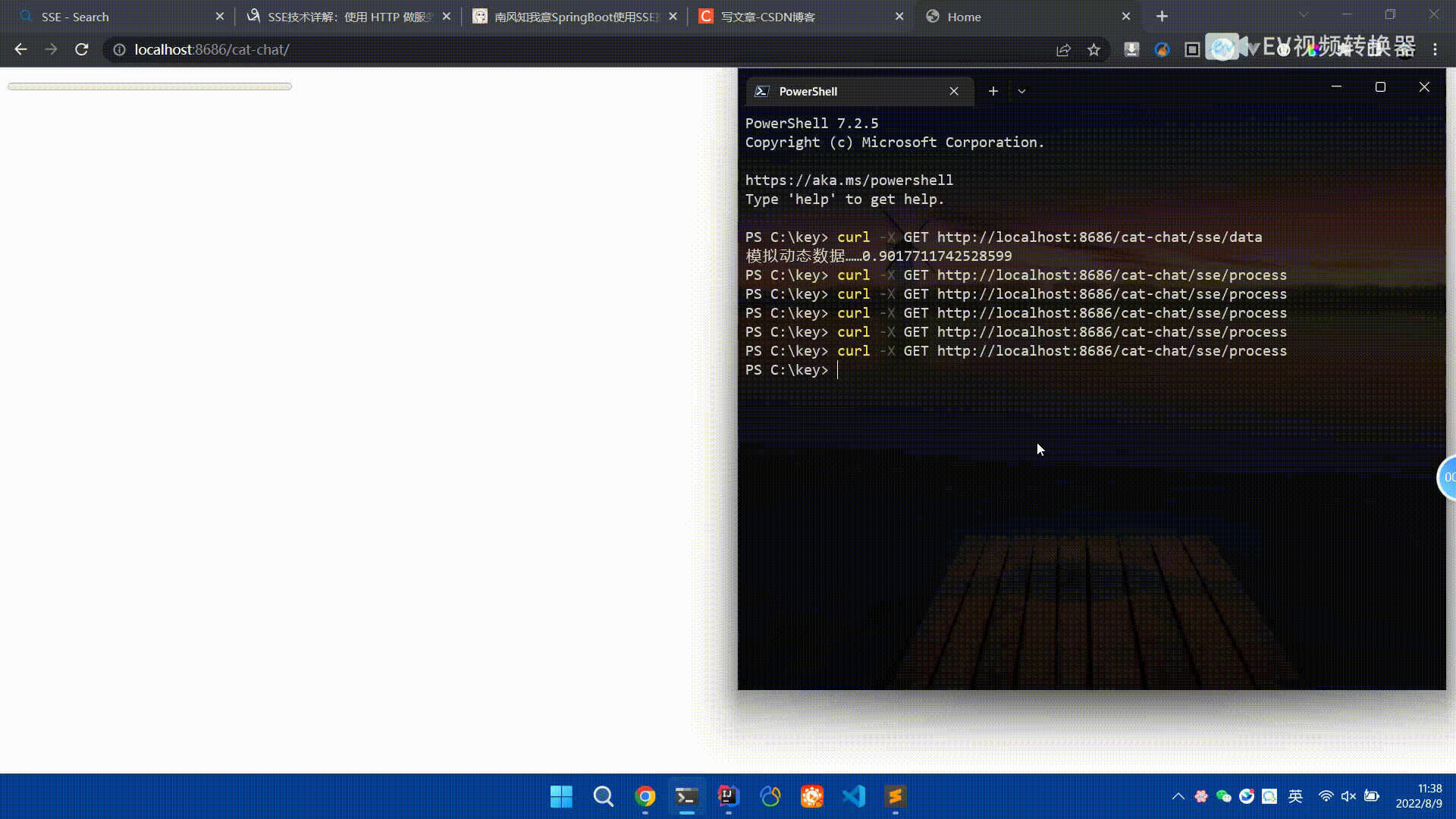 Spring Boot怎么使用SSE方式向前端推送数据May 10, 2023 pm 05:31 PM
Spring Boot怎么使用SSE方式向前端推送数据May 10, 2023 pm 05:31 PM前言SSE简单的来说就是服务器主动向前端推送数据的一种技术,它是单向的,也就是说前端是不能向服务器发送数据的。SSE适用于消息推送,监控等只需要服务器推送数据的场景中,下面是使用SpringBoot来实现一个简单的模拟向前端推动进度数据,前端页面接受后展示进度条。服务端在SpringBoot中使用时需要注意,最好使用SpringWeb提供的SseEmitter这个类来进行操作,我在刚开始时使用网上说的将Content-Type设置为text-stream这种方式发现每次前端每次都会重新创建接。最
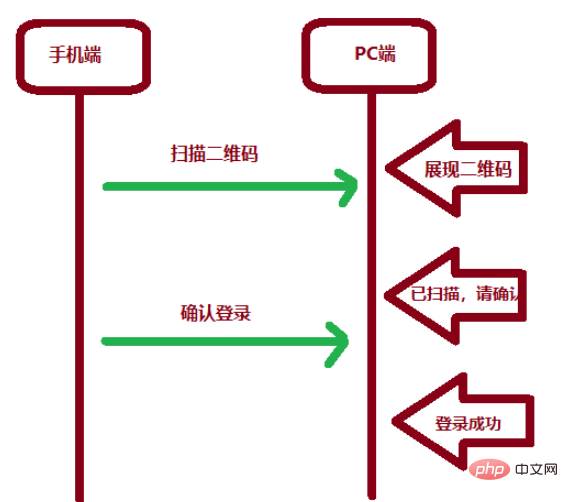 SpringBoot怎么实现二维码扫码登录May 10, 2023 pm 08:25 PM
SpringBoot怎么实现二维码扫码登录May 10, 2023 pm 08:25 PM一、手机扫二维码登录的原理二维码扫码登录是一种基于OAuth3.0协议的授权登录方式。在这种方式下,应用程序不需要获取用户的用户名和密码,只需要获取用户的授权即可。二维码扫码登录主要有以下几个步骤:应用程序生成一个二维码,并将该二维码展示给用户。用户使用扫码工具扫描该二维码,并在授权页面中授权。用户授权后,应用程序会获取一个授权码。应用程序使用该授权码向授权服务器请求访问令牌。授权服务器返回一个访问令牌给应用程序。应用程序使用该访问令牌访问资源服务器。通过以上步骤,二维码扫码登录可以实现用户的快
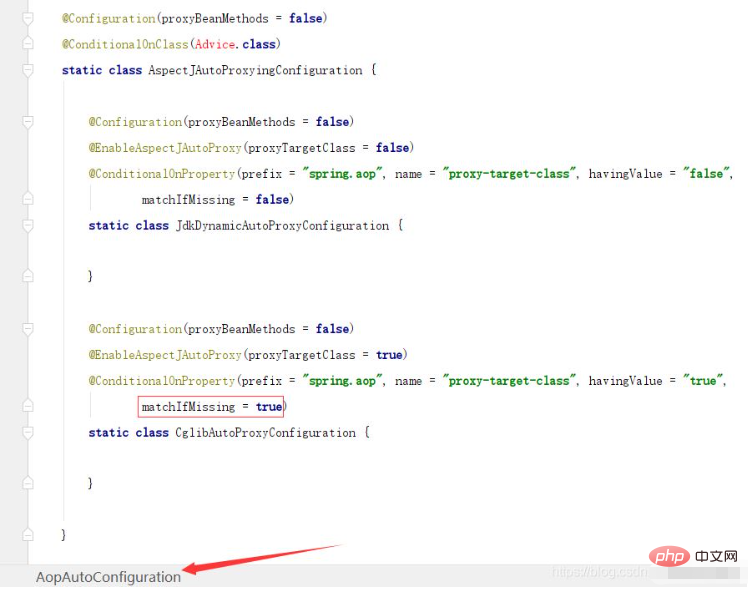 SpringBoot/Spring AOP默认动态代理方式是什么May 10, 2023 pm 03:52 PM
SpringBoot/Spring AOP默认动态代理方式是什么May 10, 2023 pm 03:52 PM1.springboot2.x及以上版本在SpringBoot2.xAOP中会默认使用Cglib来实现,但是Spring5中默认还是使用jdk动态代理。SpringAOP默认使用JDK动态代理,如果对象没有实现接口,则使用CGLIB代理。当然,也可以强制使用CGLIB代理。在SpringBoot中,通过AopAutoConfiguration来自动装配AOP.2.Springboot1.xSpringboot1.xAOP默认还是使用JDK动态代理的3.SpringBoot2.x为何默认使用Cgl
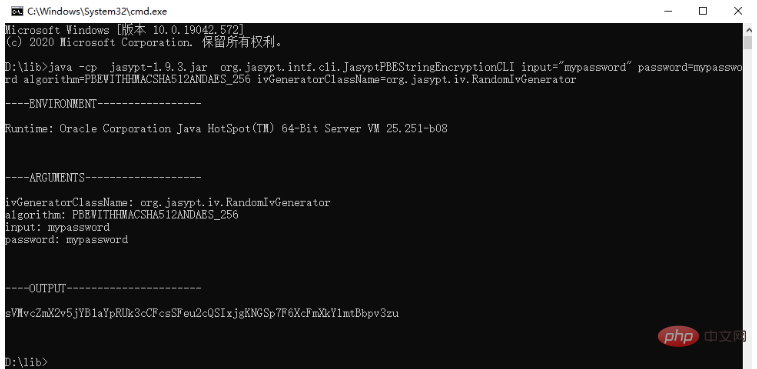 spring boot怎么对敏感信息进行加解密May 10, 2023 pm 02:46 PM
spring boot怎么对敏感信息进行加解密May 10, 2023 pm 02:46 PM我们使用jasypt最新版本对敏感信息进行加解密。1.在项目pom文件中加入如下依赖:com.github.ulisesbocchiojasypt-spring-boot-starter3.0.32.创建加解密公用类:packagecom.myproject.common.utils;importorg.jasypt.encryption.pbe.PooledPBEStringEncryptor;importorg.jasypt.encryption.pbe.config.SimpleStrin
 使用Java SpringBoot集成POI实现Word文档导出Apr 21, 2023 pm 12:19 PM
使用Java SpringBoot集成POI实现Word文档导出Apr 21, 2023 pm 12:19 PM知识准备需要理解ApachePOI遵循的标准(OfficeOpenXML(OOXML)标准和微软的OLE2复合文档格式(OLE2)),这将对应着API的依赖包。什么是POIApachePOI是用Java编写的免费开源的跨平台的JavaAPI,ApachePOI提供API给Java程序对MicrosoftOffice格式档案读和写的功能。POI为“PoorObfuscationImplementation”的首字母缩写,意为“简洁版的模糊实现”。ApachePOI是创建和维护操作各种符合Offic
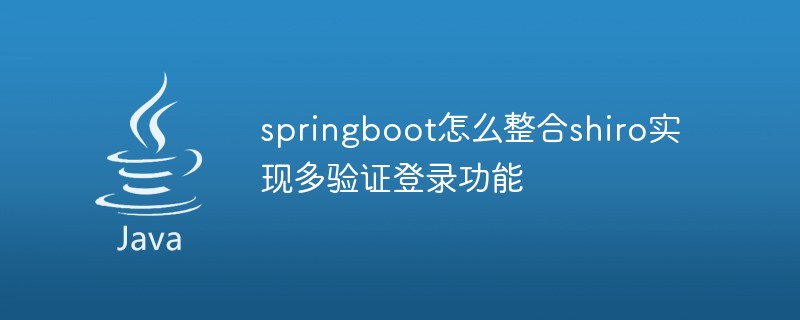 springboot怎么整合shiro实现多验证登录功能May 10, 2023 pm 04:19 PM
springboot怎么整合shiro实现多验证登录功能May 10, 2023 pm 04:19 PM1.首先新建一个shiroConfigshiro的配置类,代码如下:@ConfigurationpublicclassSpringShiroConfig{/***@paramrealms这儿使用接口集合是为了实现多验证登录时使用的*@return*/@BeanpublicSecurityManagersecurityManager(Collectionrealms){DefaultWebSecurityManagersManager=newDefaultWebSecurityManager();
 SpringBoot项目打包发布到外部tomcat遇到的问题怎么解决May 10, 2023 pm 05:49 PM
SpringBoot项目打包发布到外部tomcat遇到的问题怎么解决May 10, 2023 pm 05:49 PM先说遇到问题的情景:初次尝试使用springboot框架写了个小web项目,在IntellijIDEA中能正常启动运行。使用maven运行install,生成war包,发布到本机的tomcat下,出现异常,主要的异常信息是.......LifeCycleException。经各种搜索,找到答案。springboot因为内嵌tomcat容器,所以可以通过打包为jar包的方法将项目发布,但是如何将springboot项目打包成可发布到tomcat中的war包项目呢?1.既然需要打包成war包项目,首


Hot AI Tools

Undresser.AI Undress
AI-powered app for creating realistic nude photos

AI Clothes Remover
Online AI tool for removing clothes from photos.

Undress AI Tool
Undress images for free

Clothoff.io
AI clothes remover

AI Hentai Generator
Generate AI Hentai for free.

Hot Article

Hot Tools

EditPlus Chinese cracked version
Small size, syntax highlighting, does not support code prompt function

Safe Exam Browser
Safe Exam Browser is a secure browser environment for taking online exams securely. This software turns any computer into a secure workstation. It controls access to any utility and prevents students from using unauthorized resources.

Dreamweaver CS6
Visual web development tools

SublimeText3 Linux new version
SublimeText3 Linux latest version

mPDF
mPDF is a PHP library that can generate PDF files from UTF-8 encoded HTML. The original author, Ian Back, wrote mPDF to output PDF files "on the fly" from his website and handle different languages. It is slower than original scripts like HTML2FPDF and produces larger files when using Unicode fonts, but supports CSS styles etc. and has a lot of enhancements. Supports almost all languages, including RTL (Arabic and Hebrew) and CJK (Chinese, Japanese and Korean). Supports nested block-level elements (such as P, DIV),







